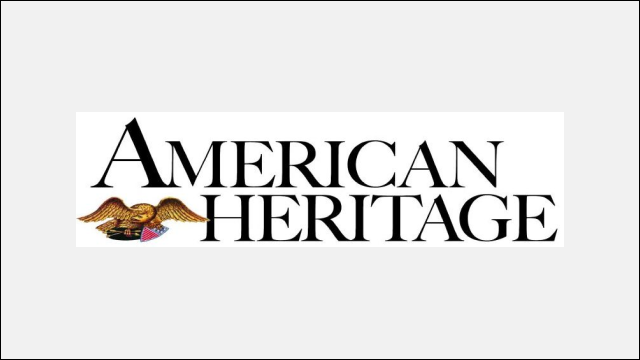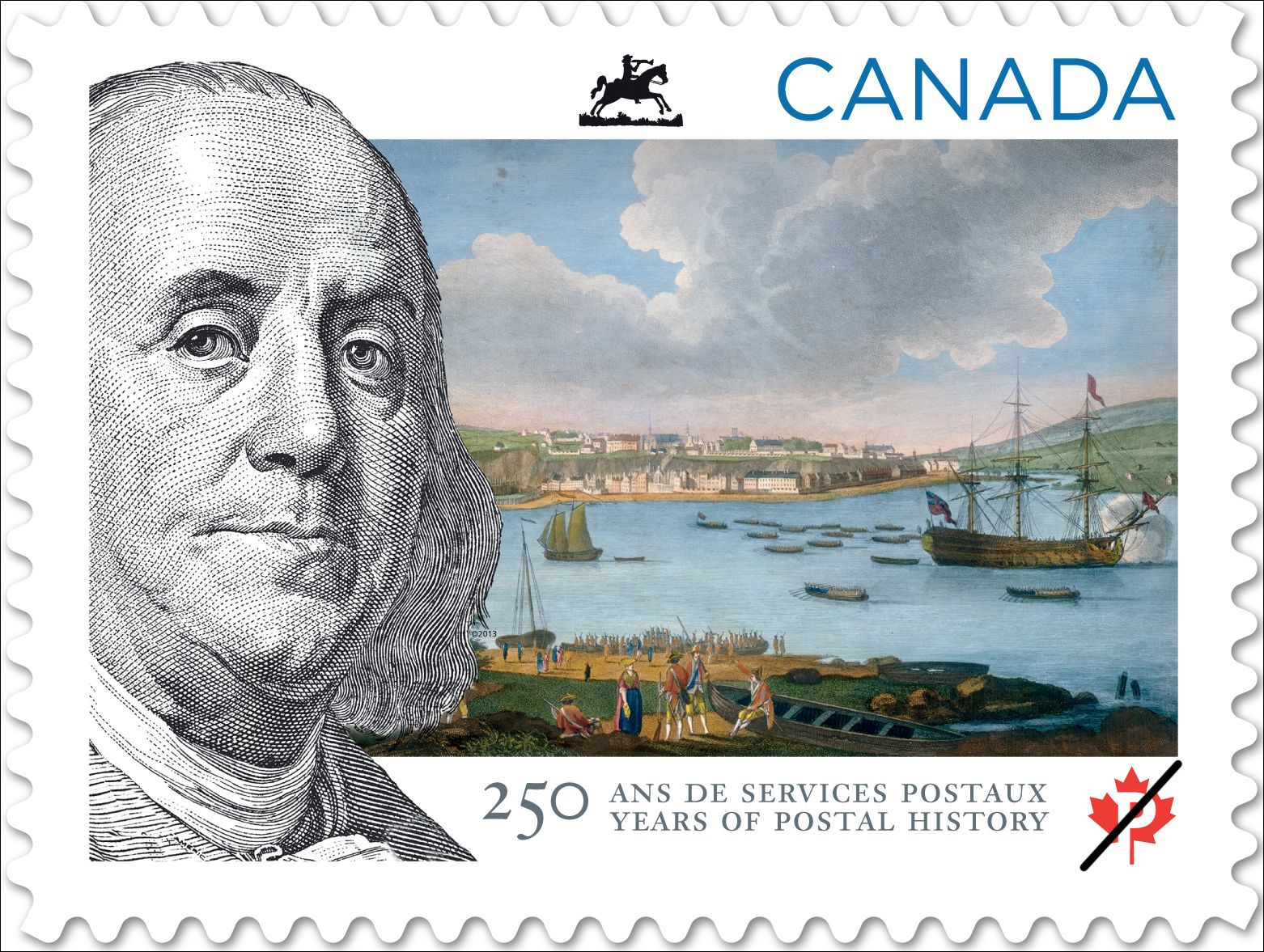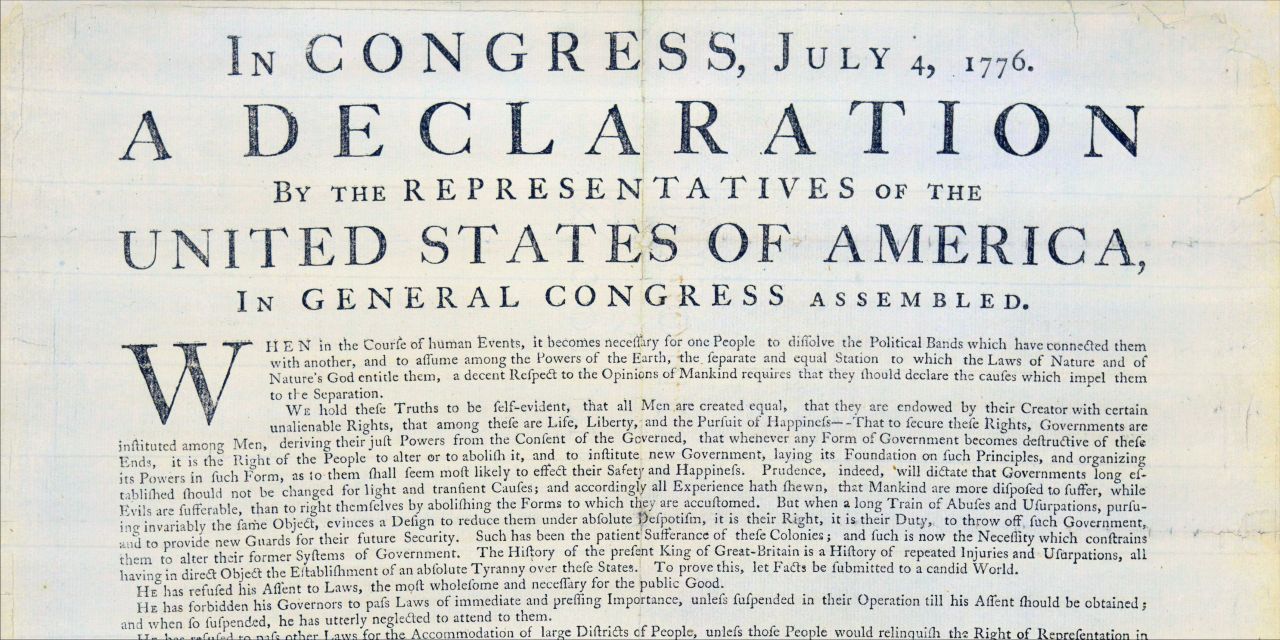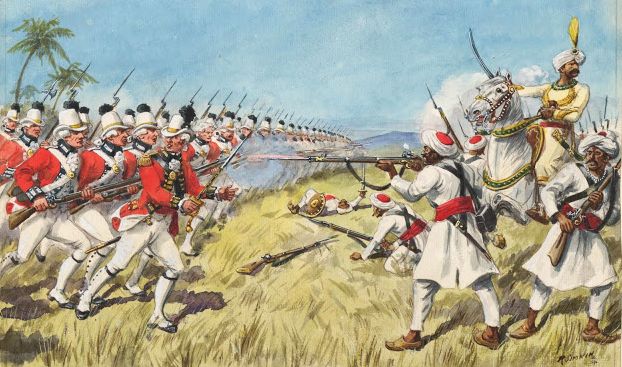Authors:
Historic Era: Era 3: Revolution and the New Nation (1754-1820s)
Historic Theme:
Subject:
| Volume 70, Issue 5

Authors: Richard Bell
Historic Era: Era 3: Revolution and the New Nation (1754-1820s)
Historic Theme:
Subject:
| Volume 70, Issue 5


Editor’s Note: Richard Bell is a professor of history at the University of Maryland. His book Stolen: Five Free Boys Kidnapped into Slavery and Their Astonishing Odyssey Home, was a finalist for the George Washington Book Prize. In his most recent book, The American Revolution and the Fate of the World, Prof. Bell provides a view of the War of Independence as a sprawling struggle that upended millions of lives and inspired freedom movements around the world. Portions of this essay appeared in the book.
In November 1773, few could have imagined that the fleet of ships carrying Chinese tea to ports across America would send the world to war and transform so many lives beyond recognition. The American Revolution did not involve just thirteen of Britain’s dozens of New World colonies. It was a global event that drew participants from all over the world., and in its consequences, both immediate and long range, shook every quarter of the globe.
The American Revolution set much of the world as we know it in motion. Literally, it sent caravans of navy vessels, cargo ships, and prison transports snaking across every ocean on the planet, as part of an unprecedented migrant crisis that forced great flows of people — soldiers, sailors, refugees, fugitives, and convicts alike — out toward uncertain futures in alien lands.
Just as important, it upended the economic system, disrupting supply chains and trade routes, and shook the political order to its core, securing freedom and sovereignty for millions, while deferring or denying it for many millions more. As Thomas Paine told anxious colonists agonizing whether to break with Britain in 1776, “we have it in our power to begin the world over again.”

As a child growing up outside London, I learned next to nothing about the American Revolution and its global ripple effects. The subject was conspicuously missing from classrooms and curricula. It is perhaps understandable that British people would rather not be reminded of the War of Independence at all, let alone reflect upon its world-historical significance.
But after moving to the United States and becoming a naturalized citizen, I discovered that a similar form of collective amnesia has long held most Americans in its grip. Unlike the British, Americans often delight in reliving the glories of their founding moment, and as a teacher I’ve long found joy in seeing undergraduate students and public audiences light up when we talk about it. However, they usually begin from a tightly blinkered frame of reference that neglects to
This myopia dates back almost to the moment when the guns fell silent and the peace treaty was signed. As soon as American historians started writing about the Revolution, more than two centuries ago, they began to omit and oversimplify its many foreign entanglements. For political reasons, they preferred to tell a simpler story in which plucky homegrown heroes faced down all the king’s horses and all the king’s men, all on their own.
The repetition of that mythic version has buttressed the belief that the fight for American independence was an event somehow separate from world history. But it was not. In fact, winning independence required a world war in all but name. What began as a domestic dispute over taxes, trading rights, and home rule soon metastasized into something much bigger and broader, pulling in enslaved people as well as Native people and French and Spanish speakers living along the length of the Mississippi River. And it kept expanding outward, reverberating across every habitable continent and spreading tumult, uncertainty, and opportunity in all directions.
Recovering the reach and resonance of the American Revolution helps us better understand every major actor, event, and turning point in that too-familiar story. To tell it fully, then, is to place the Sons of Liberty, the minutemen, and the members of the Continental Congress on the same stage as Black American freedom seekers, German relief troops, Irish privateers, Chinese tea-pickers, Mohawk warriors, Sierra Leonean separatists, French sailors, Spanish blanket weavers, patriot POWs, Jamaican washerwomen, Indian rulers, loyalist war widows, and British peace activists.
In short, the great task before us is to revisit and reimagine America’s founding fight as a creation story in the making of our modern world.

From its beginning, the leaders of the rebellion well understood the global reach and resonance of their great struggle. Benjamin Franklin, for example, worked tirelessly over the eight years between 1775 and 1783 to kindle the civil war within the British Empire into a worldwide blaze. In 1776 alone, he trekked to Canada to urge the Québécois to rise up against British rule, drafted a German-language handbill to provoke Hessian desertions from the king’s ranks, and set out across the Atlantic to try to secure military alliances with France, Spain, and the Netherlands.
Over the ninety months he spent in Europe, Franklin would continue to
Franklin was also responsible for engineering the global peace settlement he signed in the French capital in 1783. His work to forge that Treaty of Paris not only secured the independence of the United States. It also authorized the new nation to push back the Spanish Empire’s encroachments into the Illinois Country and seize vast territories from Native peoples, redrawing almost every boundary line in North America and pushing his own fledgling republic’s western border a thousand miles into the continent’s vast interior.
Even the Declaration of Independence anticipated that the fight for America’s future would be the work of many hands in many places. On July 4, 1776, an Irish immigrant to Philadelphia worked late into the night to set the final text of the Declaration into type. John Dunlap had a contract to print all of Congress’s official documents, and by morning he had produced two hundred identical copies on large sheets of Dutch paper destined for distribution across North America and around the Atlantic world. Everywhere it went, the Declaration announced its grand purpose, informing the international community that thirteen British colonies had formed a new political union eager to join “the powers of the earth.”
This was not simple courtesy. The delegates knew that they would need hard cash and generous credit from deep-pocketed trading partners as well as more boots on the ground and massive naval support to defeat Britain. Just weeks earlier, Richard Henry Lee, the Virginian who first proposed separate nationhood, had reminded his colleagues in Congress that “no State in Europe will either Treat or Trade with us so long as we consider ourselves Subjects of G[reat] B[ritain].” Lee was convinced that a global declaration of the patriots’ sincere ambitions for independence was “the only means by which foreign Alliance[s] can be obtained.”
Seen in this light, the document Dunlap printed was actually a declaration of interdependence. This translated it into multiple languages immediately night of July 4 is why the delegates and sent copies addressed to King Louis XVI of France and King Carlos III of Spain on the first ships bound for Europe on July 8. It explains why John Adams drew up talking points for treaty negotiations with both nations just ten days later. It explains why Congress dispatched Benjamin Franklin to Paris that fall.
Caption: Irish immigrant John Dunlap produced the first printing of the Declaration of Independence on the evening of July 4, 1776. There are 26 surviving copies of what is also known as the “Dunlap Broadside.” Library of Congress Those printed proclamations of intention and invitation reached Spain, Austria, and the Dutch Republic by the end of August, and France, Denmark, Switzerland, Poland, and the Italian states a few weeks later. It would take Franklin and his fellow envoys many months of lobbying to persuade Europe’s great powers to sign official terms of military alliance. However, his team quickly secured their covert support in the form of money and supplies. As a result, the Continental Army soon received much-needed shipments of muskets and gunpowder sourced from arsenals in the French and Dutch Caribbean and loans to pay soldiers’ wages from donors in Spanish Cuba. The men and boys who benefited from this bounty of foreign assistance were themselves strikingly polyglot and pluralistic. The Continental Army’s senior ranks boasted volunteer officers from as far afield as South America and Eastern Europe. Many rank-and-file enlistees were also recent immigrants, and patriot regiments hummed with a cacophony of different tongues, accents, and dialects throughout the war. Among the Continental soldiers taken prisoner at the Battle of Trois-Rivières in Quebec in 1776, for instance, eighty-nine of two hundred told their redcoat captors they had been born overseas. King George’s own coalition was no less multicultural, multilingual, and multinational. Warriors from more than a dozen Native nations in the trans-Appalachian west helped the redcoats engage rebel forces, as did perhaps twenty-five thousand Black fugitives from slavery. Nineteen thousand resident white loyalists also supplemented British troops, as did at least eight thousand Irishmen and more than thirty thousand soldiers loaned to the king by princes in the German states. When coupled with the Royal Navy’s initially uncontested command of the seas, all this manpower was enough to provide the British cause in America with a critical early advantage. Indeed, one of General George Washington’s greatest achievements was to avoid being cornered and forced to capitulate to these intimidating legions in the war’s early years. Washington’s wartime correspondence makes clear that he understood that the patriots’ most pressing priority was to divert British soldiers and sailors away from the American battlefront and tangle them up in costly, distracting operations elsewhere. Leaders in Congress agreed and sent out armadas of patriot privateers to do just that, plundering British shipping around the Atlantic rim and forcing Royal Navy warships to redeploy to convoy duty. Privateering was hugely hazardous work. The merchant ships might defend themselves with salvos of cannon fire that could smash flesh and bone into atoms. Thousands of seamen lost their lives to combat, shipwreck, or disease, leaving many colonial port towns decimated. One third of the women in Marblehead, Massachusetts, were widowed when their husbands went “missing at sea” or “died abroad”: a quarter of Marblehead children never saw their fathers again. Still, despite the risks, patriot privateers were relentless. Sometimes raising false flags to maneuver close to their targets, they terrorized Britain’s home waters and all the principal trading routes of its global empire for the best part of eight years. While the Continental Navy only ever put fifty-seven ships to sea, sixteen hundred vessels received letters of marque. Between them, they undertook thousands of cruises and made many spectacular hauls. Actuaries at Lloyd’s of London, the insurance company, calculated that patriot privateers captured at least 3,386 British ships during the war — including twenty-six slavers carrying six thousand African captives. The scale of their campaign was staggering. Some fifty-two thousand men and boys did this work. Their labors at sea stirred American shipyards to life and put food on their families’ tables and cash in their wives’ pocketbooks. The prizes they took, perhaps $1.6 billion in today’s money, also buoyed the American economy, infusing it with commodities and much-needed capital, and curbing hyperinflation. The privateers wrought outsized impacts upon their British enemies, too. Their hauls not only included enormous cargoes of consumer products like sugar, rum, meat, and fish, but also massive consignments of intercepted military supplies like coal, pistols, rigging, and gunpowder that had been destined for the battlefront or the Royal Navy. Evidently, then, privateers were an essential arm of the patriot war effort. They managed to capture nearly 10 percent of Britain’s merchant fleet, forcing infuriated Royal Navy commanders to divert precious warships to convoy duty and spiking shipping insurance rates to ruinous levels. Their predations raised the price of the war for every British businessman with mercantile interests, and drove many of them to call for an immediate ceasefire. Nor was it just the men in the counting houses in Bristol, Liverpool, and London who felt the scorpion’s sting. The damage done by patriot privateers increased every Briton’s cost of living and war-weariness, pushing the public to consider the unsettling possibility that the rebels were impressive antagonists and that Britannia was not, in fact, invincible. See also "American Rebels at Sea" by Eric Jay Dolin In retaliation, leaders in London licensed thousands of privateers of their own, dispatching them from Crown-controlled ports like New York City, Halifax, and Kingston. Royal Navy admirals also
The patriots’ real breakthrough came in 1778 and 1779, when the fleets of France and Spain finally joined this contest. They set about turning all of the world’s oceans into battlefields. Spain pushed the conflict into the Gulf of Mexico, the Mediterranean Sea, and the English Channel, while France went on the offensive almost everywhere else. In the Caribbean, French admirals set their sights on the conquest of sugar islands like Jamaica — the diamonds in King George’s glittering imperial crown. To garrison those vulnerable treasure houses, Britain had to reassign regiments from tours of duty in North America and abandon Philadelphia, the biggest prize the redcoats had taken so far. Over in India, French strategists succeeded in forging a pivotal new anti-British alliance with Haidar Ali, the Muslim ruler of the Kingdom of Mysore. In 1780, he dispatched no less than eighty thousand troops to try to seize a British stronghold in Madras. That Mysorean invasion force contained nearly ten times the number of soldiers General Washington would have at his command as he led the Continental Army into battle the following year against Lord Cornwallis at Yorktown. The patriots’ success in drawing foreign partners into the war was essential to achieving American independence. Britain ultimately lost not only because of Washington’s extraordinary tenacity in the war’s several mainland theaters, but also because the king’s men had to stage long sieges, wage desperate naval battles, and take mounting casualties on too many other fronts spread too far apart. Ministers in London directed the fortunes of one hundred thousand troops during the conflict’s climactic final stages. Yet those soldiers and sailors had to stretch across a vast global canvas, leaving fewer than three in ten of them to try to rout the insurgents in North America. Still, there was nothing inevitable about the outcome of the Revolutionary War. In truth, the patriots’ path to victory was a near decade-long slog characterized by a string of strange bedfellows, strained alliances, and dramatic reversals. No one was ever certain what would happen next. That stark reality forced both sides to wage slash-and-burn propaganda campaigns designed to sow doubt and disinformation among their enemies. Britain’s loyalist supporters, for instance, tried repeatedly to weaponize their fellow
For their part, Samuel Adams and Paul Revere each worked hard to persuade Irishmen, Hessians, Indigenous people, and former slaves to defect to the patriot side. Meanwhile, over in Britain, a vibrant antiwar movement brought on motion after motion in Parliament to cease fire and end all offensive operations against the rebels. From the first shots at Lexington and Concord in 1775 to the last cannon blasts at Cuddalore in southern India in 1783, the American Revolution broke boundaries and crossed borders. Indeed, the decisive role played by international allies like France and Spain is only one part of this sprawling story. While the United States rose from the wreckage of the war to take its place as the youngest member of the family of nations, many other communities caught up in it had to fight just as long and just as hard to find their own footing in the brave new world that followed. For enslaved people, the Revolution was a fierce campaign to stage the largest exodus out of bondage since biblical times. For Native people, the war marked a dangerous fork in the road, stirring famine, spurring a massive refugee crisis, and permanently shifting the balance of power in the heart of the continent. None of these men, women, and children were mere spectators to America’s great struggle for liberty; they were essential stakeholders, and the stakes were enormous. Indeed, American independence was nothing less than a geopolitical earthquake, an event of such magnitude and strength that Thomas Jefferson later described the Declaration, the new nation’s birth certificate, as “an instrument, pregnant . . . with the fate of the world.” Within the British Empire, for instance, the war’s shocks and after-shocks demonstrated that the king’s hold over his overseas colonies was neither permanent nor invincible. That revelation prodded insurgents in British possessions from Ireland to Sierra Leone to take to the streets to assert their own ambitions for economic and political autonomy over the decades to come. American independence also cut the number of enslaved people laboring under Britain’s flag by five hundred thousand, knocking the pro-slavery lobby in London off-balance and dramatically diminishing its political power. Activists there leveraged this wholly unanticipated outcome to accelerate the rise of an organized antislavery campaign after 1783. The patriots’ dreams of liberty ricocheted around much of the rest of the planet, too, pushing questions about human dignity, popular sovereignty, and citizenship toward the top of the global agenda and equipping rights seekers everywhere with a potent new vocabulary. Of course, the patriots’ fight for self-determination would not break the grip of every entrenched political hierarchy. In fact, in some places it produced decidedly reactionary results. In the Spanish Empire, for example, senior ministers responded to events in the Americas with an authoritarian crackdown to bolster imperial control. Nor did the rebellion bring on the abrupt collapse of the British Empire. King George surrendered thirteen of his mainland colonies to the newly United States but held tight to more commercially valuable possessions elsewhere. The British Empire emerged from the maelstrom arguably stronger and more ambitious than ever, having off-loaded its most troublesome properties. Sixty thousand loyalist asylum seekers displaced by the war fanned out to other British colonies in its aftermath. Their arrival helped to tighten the reins of royal rule over Canada, the Caribbean, and India, and to extend the king’s dominion farther into Africa, Asia, and Australia. First, the Revolution stirred the mass migration and circulation of enormous numbers of people across a sweeping stage. Second, the human cost of this eight-year war was catastrophic for many of those caught up in its tides. Third, the war was not an inevitable march to patriot victory, but instead the highly contingent result of improbable choices and last-minute improvisations. Fourth, naval power was an important key to military success and what happened at sea often mattered just as much as what happened on land. Fifth, the governments, soldiers, and civilians who wrestled for global advantage often acted on the understanding that trade was power. Sixth, the patriots’ struggle for self-determination stirred imperial authorities to increase oversight and security over their remaining colonial subjects. Seventh, this was a conflict in which the call for liberty rang around the world as never before. Mobility. Catastrophe. Contingency. Sea Power. Commerce. Security. Liberty. These seven essential themes come into clear focus when we frame the Revolutionary War in transnational terms. Looking at the war through a global lens also reveals that the fight for American independence stirred a repressive crackdown on imperial subjects in many other places around the world. After the ignominy of losing thirteen rebel colonies, the British government tightened administrative reins over Canada, the Caribbean, Ireland, India, and Sierra Leone; turned prison hulks into common sights across ports from Jamaica to eastern Australia; and sent waves of refugee loyalists to lay the groundwork to further expand Britain’s global footprint. These were not isolated impulses. The Spanish government also escalated authoritarian control over its own vast New World dominions after the war. Even the United States joined in. After independence, the various state governments dispatched their citizens to thrust decisively westward, vanquishing Native peoples who stood in their path and asserting American occupation in ways
Yet freedom, too, was on the march as a result of the Revolutionary War, a conflict in which the call for self-determination rang out as never before. In the decades to come, the patriots’ call to liberty would push questions about human rights, citizenship, and sovereignty toward the top of the global agenda for the first time and would fuel the antislavery fight around the world. And while the British Empire did not suddenly collapse at war’s end in 1783, the dream of liberty that sparked the American Revolution coursed into political circuits in every culture and language. In the 250 years since 1776, rebels, separatists, and state makers on every settled continent have crafted more than a hundred declarations of independence in imitation of the American original, marking the halting but unmistakable emergence of a world of nation-states from the ashes of a world of empires.


In a broad view of the Revolution, pulling together many separate strands of research conducted by historians in a variety of specialties, we can see seven core arguments:
In 1776, Benjamin Franklin’s friend Thomas Paine had assured anxious colonists agonizing whether to break with Britain that “we have it in our power to begin the world over again.” In Paris in 1783, Franklin chose to hope that the dawn of that new world was finally breaking.
